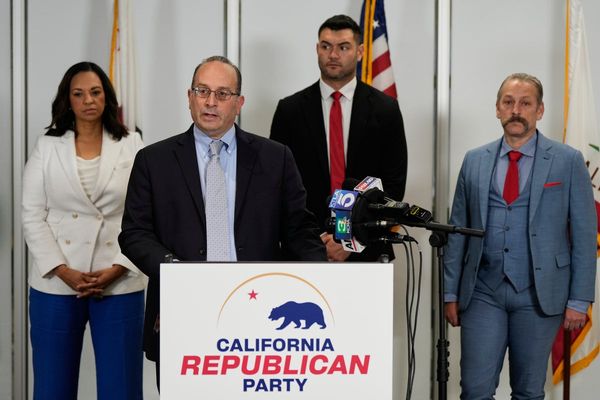
The number of 16 to 24-year-olds in England who are not in education, employment or training (Neet) currently stands at nearly one million.
In a recent document of proposed policy, the government has set out a range of initiatives to help them. These include new qualifications designed for young people who achieve grade two or below in maths and English GCSEs, and guaranteed access to education, training or work. But will these initiatives be successful?
There are a multitude of contributing factors that lead to young people becoming Neet. These include if they have caring responsibilities, special educational needs or disabilities, and mental health challenges. Essentially, though, there are two cross-cutting challenges that must be addressed.
First, too many young people in England reach age 16 with poor qualifications, having become disillusioned with education. England’s further education system faces an enormous challenge to help them achieve results that will enhance their employment prospects.
Second, this leaves them unprepared for employment in a labour market with diminishing opportunities for young, low skilled workers.
Each August, when GCSE results are released, statistics set out what proportion of 16-year-olds achieved a “pass” – a grade four or above – in their exams. Far less attention is paid to the approximately 30,000 young people who do not achieve a grade 1, the lowest grade, in GCSE English and maths.
Most of these young people have complex special educational needs and disabilities or are severely absent from school. Many are not entered for GCSEs at all.
More generally, in research with colleagues, we estimate that there are up to 80,000 lower attaining young people each year aged 16, who for instance, achieve grade two or below in maths and English. Despite a raising of the compulsory age for education and training to 18, many students still do not engage with post-16 learning after their GCSE year.
A key new initiative from the government to address this – detailed further in the recently published independent review into curriculum and assessment – is a reconsideration of the post-16 policy that requires GCSE resits in English and maths for those who do not achieve at least grade four.
For the lowest attaining young people, the pass rate for these resists is currently very low. The proposed introduction of new post-16 qualifications in these subjects at level one, one level below GCSE (level two), for the lowest attaining is therefore encouraging.

More generally, there is a refreshing recognition that not all young people will achieve level three – A-levels, T-levels or equivalent qualifications – by the age of 19 and get a job at this level. This includes a suggestion that good quality vocational education pathways will now “prepare students to progress directly into level two occupations” – jobs that require skill levels equivalent to GCSE.
Unfortunately, the new 16 to 19 level one maths and English qualifications that these students will need to take, are envisaged to support them “progressing onto GCSE” in these subjects. Acceptance that many low attainers struggle to achieve this does not seem to fit with a continued drive for them to get GCSE maths and English. Many level two occupations, such as bricklaying and plastering, do not require level two maths and English, so this seems unnecessary.
The job market
The “supply” of approximately 80,000 low skilled young people to the labour market each year is a long-standing problem in the UK as they are much more likely to be Neet.
Many of the government’s proposed policies are relevant to this challenge. The main approach is to provide “guarantees”.
The “youth guarantee” promises young people “access to education, training and/or help to get into work”, including a guaranteed job for those unemployed for over 18 months. The proposed “pathways to work guarantee” will “provide training, work experience and a guaranteed job interview”. There will also be a “guaranteed college place in reserve for all 16-year olds”.
However, the government’s proposals contain little practical consideration of the capacity needed to meet these commitments. Much of the focus on job guarantees (for instance, “payments of up to £3,000 per apprentice” for employers) will simply offset recent national minimum wage and national insurance contribution increases that likely reduce young people’s job opportunities. Local authorities already have similar duties regarding post-16 education guarantees.
The government has set out an ambitious plan for change. However, the lack of practical detail on challenges such as capacity, as well as limitations to any new spending, may constrain the achievement of this ambition.
The government’s commitment to a data-driven approach that joins up skills and employment is very encouraging. Working with colleagues, I am trying to inform this data-driven approach. I would suggest that reversing unintended consequences of previous policies, can be achieved at low cost.
Reintroducing partnership approaches between schools and further education providers, for occupational programmes that spanned the ages of 14 to 18, would better engage those who have become disillusioned with education and provide education and training that prepares them for a variety of level two occupations. Sectors such as construction, health and social care, for instance, are struggling to fill roles.
Any concern over the narrowing of a young person’s learning early in their school career can be mitigated by the government’s commitments to lifelong learning, and the recent national curriculum recommendations that these learners can still progress to level three “if that is the right option”.
Peter Urwin has received funding from UKRI, ESRC, Acas and the Nuffield Foundation,
This article was originally published on The Conversation. Read the original article.







